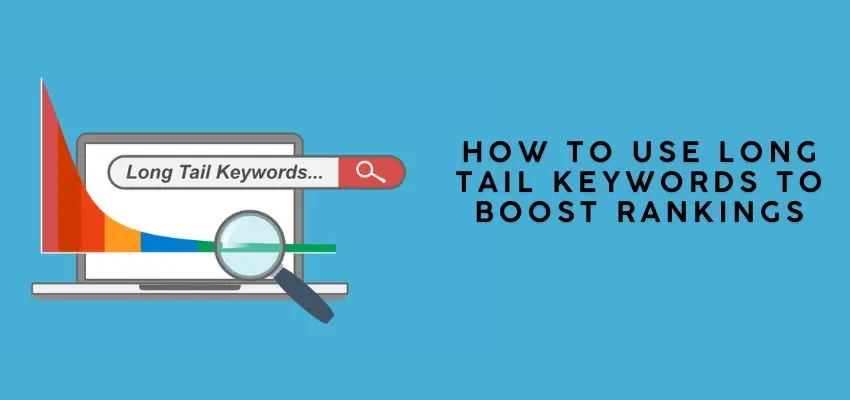Search engine optimization (SEO) is evolving, and one strategy that remains essential is targeting long-tail keywords. In 2025, with increased competition and smarter algorithms, long-tail keywords are more crucial than ever. They not only help drive targeted traffic but also boost conversion rates by attracting users closer to making purchasing decisions.
For a foundational understanding of SEO, check out our blog on SEO Basics for 2025.

What Are Long-Tail Keywords?
Long-tail keywords are longer, more specific search phrases that generally have lower search volumes but higher conversion rates. Unlike short, broad keywords like “shoes,” a long-tail keyword such as “best running shoes for flat feet in UAE” targets a specific audience ready to take action.
Why They Matter in 2025
Lower Competition: Easier to rank for compared to broad keywords.
Higher Conversion Rates: Users searching for detailed phrases are often further along the buying journey.
Voice Search Optimization: With the rise of voice-activated searches, conversational long-tail keywords are becoming increasingly important.
Cost-Effective for PPC: Lower cost-per-click in paid advertising campaigns.
How to Find Long-Tail Keywords
Identifying effective long-tail keywords requires the right tools and strategies. Here are the most effective methods:
1. Use Keyword Research Tools
Platforms like Semrush Keyword Magic Tool, Ahrefs, and Google Keyword Planner can generate extensive lists of long-tail keywords based on your primary keywords.
2. Explore Google SERP Features
Autocomplete: Type your seed keyword into Google and note the suggested searches.
People Also Ask: Offers common questions users ask related to your topic.
Related Searches: Found at the bottom of Google search results.
3. Leverage Q&A Platforms and Forums
Sites like Quora, Reddit, and niche forums are goldmines for discovering the exact phrases your audience is using.
4. Analyze Competitor Keywords
Use tools like Ahrefs to identify long-tail keywords your competitors are ranking for but you are not.
Pro Tip: Regularly revisit your keyword strategy to stay ahead of the competition.
How to Use Long-Tail Keywords Effectively
Finding long-tail keywords is only half the battle. Here’s how to implement them for maximum SEO impact:
1. In Your Content
Use long-tail keywords naturally in blog posts, FAQs, and landing pages. For example, when optimizing visual content, applying strategies similar to those in our Image SEO Guide can enhance both user experience and rankings.
2. Optimize On-Page Elements
Title Tags: Include long-tail keywords without keyword stuffing.
Meta Descriptions: Use them to improve click-through rates.
URLs: Keep them clean but descriptive.
3. Create Pillar Pages and Topic Clusters
Develop a main page around a broad topic and create supporting content targeting various long-tail keywords. This approach strengthens topical authority and improves overall SEO performance.
4. Voice Search Optimization
Incorporate conversational phrases that people use in voice searches, e.g., “how can I…” or “best way to…”
Not sure where to start? Contact CG Marketing for expert keyword strategy and implementation.
Measuring the Impact of Long-Tail Keywords
Tracking your progress is essential to understanding what’s working. Use the following tools:
Google Analytics: Monitor organic traffic and conversions.
Google Search Console: Track keyword positions and impressions.
Ahrefs & Semrush: Analyze backlinks, keyword rankings, and competitor data.
Quick Win: Regularly update old content with newly discovered long-tail keywords to maintain rankings.
FAQs
1. How long does it take to see results from long-tail keywords?
Typically, you can start seeing improvements within 1-3 months, depending on competition and content quality.
2. Are long-tail keywords still relevant in 2025?
Absolutely! With advancements in AI and voice search, long-tail keywords are more important than ever.
3. How many long-tail keywords should I target per page?
Focus on one primary long-tail keyword per page and include 2-3 secondary ones naturally.
4. Can long-tail keywords improve my paid advertising results?
Yes, they often have lower CPCs and attract high-intent users, improving ROI.
5. Do long-tail keywords help with voice search optimization?
Yes, their conversational nature aligns perfectly with voice search queries.
Conclusion
Long-tail keywords are indispensable in your 2025 SEO strategy. They attract targeted traffic, improve conversion rates, and are cost-effective for both organic and paid campaigns. By implementing these keywords thoughtfully, you can significantly enhance your website’s visibility and user engagement. To complement your keyword strategy, don’t miss our detailed Effective Keyword Research Guide.
Ready to take your SEO to the next level? Schedule a Free Website Audit with CG Marketing and let us help you dominate the SERPs!
